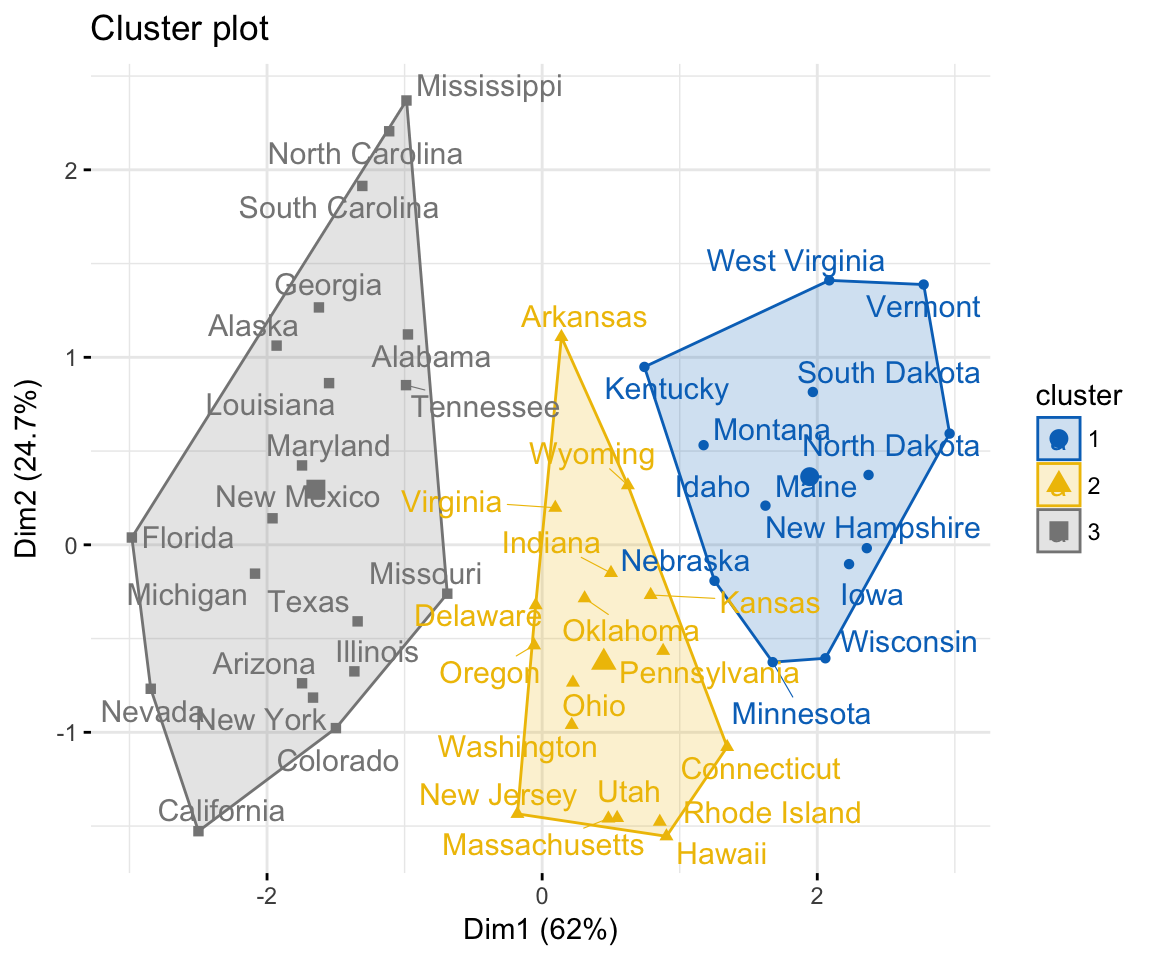In this first volume of symplyR, we are excited to share our Practical Guides to Partioning Clustering.

The course materials contain 3 chapters organized as follow:
Contents:
- K-means basic ideas
- K-means algorithm
- Computing k-means clustering in R
- Data
- Required R packages and functions: stats::kmeans()
- Estimating the optimal number of clusters: factoextra::fviz_nbclust()
- Computing k-means clustering
- Accessing to the results of kmeans() function
- Visualizing k-means clusters: factoextra::fviz_cluster()
- K-means clustering advantages and disadvantages
- Alternative to k-means clustering
K-Medoids Essentials: PAM clustering
Contents:
- PAM concept
- PAM algorithm
- Computing PAM in R
- Data
- Required R packages and functions: cluster::pam() or fpc::pamk()
- Estimating the optimal number of clusters: factoextra::fviz_nbclust()
- Computing PAM clustering
- Accessing to the results of the pam() function
- Visualizing PAM clusters: factoextra::fviz_cluster()
CLARA - Clustering Large Applications
Contents:
- CLARA concept
- CLARA Algorithm
- Computing CLARA in R
- Data format and preparation
- Required R packages and functions: cluster::clara()
- Estimating the optimal number of clusters: factoextra::fviz_nbclust()
- Computing CLARA
- Visualizing CLARA clusters: factoextra::fviz_cluster()
Example of plots:

Licence:
